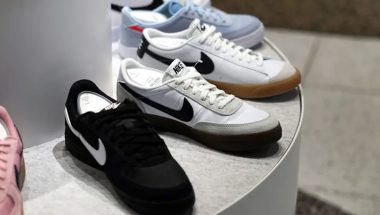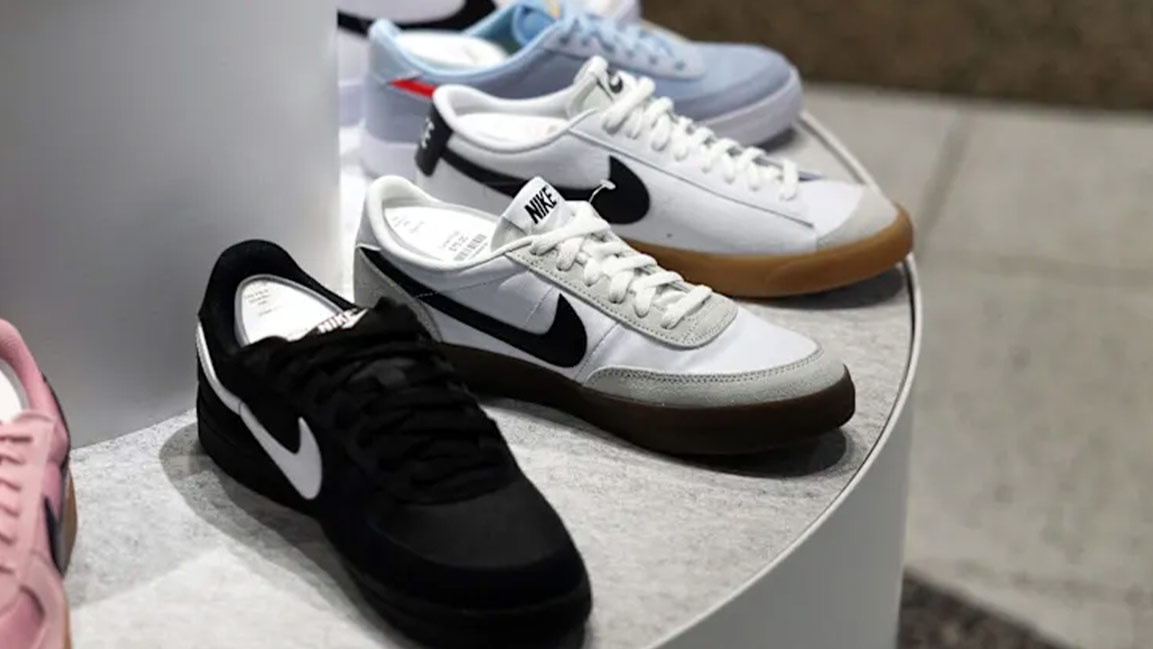- | 8:00 am
What does brand purpose really mean in 2024? 20 of the world’s top CMOs on how they answer that question
Leading marketers from McDonald’s Mastercard, Duolingo, Pinterest, Molson Coors, and more define brand purpose, and explain how they approach and measure their brand’s cultural relevance.

When Pepsi decided it was a good idea to have Kendall Jenner stroll out in the midst of a near-riot back in 2017 to quell the impending violence by giving a police officer a Pepsi, the term “brand purpose” was immediately and forever undermined, as much a laughing stock or severe brand risk as it was a pleasant way to talk about how your company was helping the world.
Now, almost seven years later, the concept of “brand purpose” is still as divisive as ever, conjuring visions of everything from greenwashing to controversial statements on social issues. But nearly ever brand still insists that they do have “purpose”—so what does it really mean in 2024?
The world’s most popular brands and elite marketers know that there isn’t a single definition, but that it essentially boils down to why your brand matters to people.
In 2019, Unilever proclaimed that it was aiming to make all of its 400 brands into “brands with purpose.” The global conglomerate’s reasoning? The previous year, its 28 Sustainable Living Brands—those taking action to support positive change for people and the planet—grew 69% faster than the rest of its business, up from 46% in 2017, and delivered 75% of its overall growth.
But in 2022, investment analyst Terry Smith (whose Fundsmith Equity is Unilever’s 15th biggest shareholder) called out the company’s purpose-driven marketing, writing in an analyst letter, “A company which feels it has to define the purpose of Hellmann’s mayonnaise has in our view clearly lost the plot. The Hellmann’s brand has existed since 1913 so we would guess that by now consumers have figured out its purpose (spoiler alert: salads and sandwiches).”
Often lost in so much of the debate about the definition is that simplest version of brand purpose : the literal purpose of a brand’s existence. From there, that purpose can be to exhibit and promote environmental sustainability, promote progressive voting rights, or maybe it’s just to make a damn good mayo. But the idea of a brand having a purpose, knowing it, and being able to creatively and effectively communicate it to its audience should not be a controversial position. In fact, its role is crucial. A clarity of purpose, and the impact of its communication, is key to any brand’s ability to tap into and even influence culture.
This is how when McDonald’s celebrated Grimace’s birthday with a purple shake last year, it knew when to speak and when to let fans grab the baton and run with it. The result was 160,000 #GrimaceShake videos on TikTok and 9.7 billion impressions.
It’s how Duolingo can use a viral, five-second Super Bowl ad to achieve its purpose to inspire people to continue their language education.
And it’s how Ally Financial used its purpose to positively impact the financial trajectory of people’s lives to create the 50/50 pledge, to help reinvent how brands engage with media in women’s sports.
In order to give you a deeper insight into how these brands work, Fast Company asked the chief marketing officers and brand executives of these brands, as well as 17 others, to share how they define a successful brand in 2024, and how they’ve managed to build and maintain that success.
There are plenty of consultants and LinkedIn thought leaders who will tell you how to navigate a fragmented media landscape, and what cultural relevance means to a modern brand, but here you will hear what that looks like in practice, directly from those who are steering some of the biggest, most popular brands on the planet.
Each of these brands have been a Fast Company Brands That Matter honoree, and offer ideas on how any brand that aspires to be an honoree—or remain one—can sharpen their insights on the frameworks, strategies, and work that have led these brands to help redefine how business meets culture, and build relationships with fans and customers to forge a better future.
DEFINING BRAND PURPOSE
While there is no universal answer, the question of how to define its purpose is central to any great brand’s success.
Morgan Flatley, McDonald’s Global CMO and Head of New Business Ventures
Our brand purpose is our “why,” it’s what we stand for and the positive impact we try to bring to our fans’ lives. We’ve consciously shifted from selling to connecting, making every touchpoint a chance to share our “why” and leave our customers feeling good about McDonald’s.
While our brand’s purpose remains constant, to stay culturally relevant we need to be flexible, adapt to the changing times, and move at the pace of our customers—which is faster than ever. So, while the heart of what we stand for has not changed, we are opening ourselves to fresh ways of expressing and living it out. It’s this paradox of embracing change to preserve tradition —making sure we continue to resonate with fans of all ages, cultures and geographies, while staying true to our purpose and who we are as a brand.
Manu Orssaud, Duolingo CMO
Brand purpose is the heartbeat of a company. It’s the rallying cry that helps inform the big, long strategic decisions you make as well as what helps to guide you on a day-to-day basis. We’re on a mission to give everyone in the world equal access to high-quality education through the use of technology. Our brand’s purpose is to fulfill that mission. In order to do that, we need to inspire people to keep learning throughout their lives, and to show them how fun and rewarding learning with Duolingo can be.
The difficult part is to balance the need to control some aspects of the brand, like consistency in visual elements and the overall narrative, while also understanding that a brand is shaped by how people perceive and live it. For example, at Duolingo, a lot of the brand work we do originates from our community, who create storylines associated with our mascot Duo. We use this as inspiration for the work we do so that it is relatable and authentic to how people see our brand.
Sofia Colucci, Molson Coors CMO
Simply put, it’s the reason we exist. What I always push on is whether it actually feels real for your brand. And if one of your consumers were to see it—would they believe it? We have to keep it real and relevant for our consumers.
It’s one of the toughest, most excruciating parts of the brand building process. If not done right, we get every brand solving world peace. However, when done right, it can be the catalyst to unlock your brand’s creativity.
Purpose must be tied to the business bottom line. A company that is purpose-driven is good for customers, good for communities and good for the world. It can and should also be good for the business. People sometimes act like that’s something you have to whisper about, but I say it loudly. If brand purpose isn’t authentic, it will fall flat and unintentionally hurt existing consumer relationships. Further, tying purpose to the business bottom line is what makes it a sustainable, strong pillar for the company and its consumers to lean on—in good times and bad. In times of economic uncertainty, it’s natural to have budget cuts. Unfortunately, marketing is often the first to feel it. If purpose is simply a brand exercise, and not a business one, those initiatives will be deprioritized, breaking consumer trust.
Raja Rajamannar, Mastercard CMO
Brand purpose is a company’s North Star. It’s what guides you, motivates you and inspires you. There is often confusion centered around brand purpose vs. cause marketing. They are not the same. If brand purpose is your North Star, cause marketing is the roadmap to get there. Brand purpose is critical to the success of a business, and for brand purpose to be impactful, it needs to be sustainable and tied to business growth. Keeping these goals at the center of everything we do helps drive our company-wide mantra of doing well by doing good.
Jeff Klein, Popeye’s CMO
Brand purpose is essentially a brand’s reason for being beyond making money—it’s the “why,” and a filter for all the work that leaves the building.
Andrea Brimmer, Ally Financial CMO
Brand purpose must be authentic to what you do and what your customer comes to you for. It can’t be tangential to your business—or your brand’s reason for being part of that conversation is antithetical to what you stand for. We are a bank, we need to center our purpose around financial services that truly serve. Help move people from being apathetic about their money to becoming emotional about its real importance in their lives.
Julie Uhrman, Angel City FC Cofounder and President
Brand purpose literally answers, “what do you stand for,” “why should I support you.” To excel in any industry, or sport, your brand purpose should be your identity and visible in everything you do so that it feels authentic to your audience. For Angel City, our purpose is to drive equity through sport and use our platform to drive positive change both on and off the field. Our purpose is deeply ingrained in our DNA, steering everything we do from our community engagement to our sponsorship model, where we reallocate 10% of all partnership dollars back into our community. With over $55 million in sponsorships secured, that’s at least $5.5 million that will benefit our community.
Kathryn McKeon, Vital Farms CMO
We don’t actually define it as ‘brand’ purpose. It’s our entire company’s purpose, and it has to show up in everything we do. Everything. And that’s really central to a meaningful purpose. At Vital Farms, our purpose is to improve the lives of people, the animals and the planet through food. We’ve had it from day one, we really make decisions accordingly, big and small, and it consistently means something in everything we do. That’s the secret to purpose. It has to be real. The fun part is building a brand on a foundation of a company with a true purpose.
Andréa Mallard, Pinterest Global Chief Marketing and Communications Officer
Brand purpose isn’t a marketing position. It’s a product position. It’s a framework for the company to determine the positive change they aim to create in the world and then make product, policy, and people decisions that align to and amplify that decision. Once you’ve done that—and only then—have you earned the right to tell that broader story. I think consumers are rightly exhausted and cynical about brands that try to establish purpose strategies that feel wholly misaligned to how the products they build or sell fundamentally impact the world.
Purpose is about knowing which issues you’re willing to lose users and advertisers over. But it also means knowing when you need to sit some issues out—even if pressure is high—in favor of having more impact on the issues we believe are truly core to our mission. That can be really uncomfortable, especially when there is a lot of pressure externally or internally for a company to weigh in on a given issue.
Evan Jones, Fender Musical Instrument Corporation CMO
Brand purpose, as I perceive it, is fundamentally derived from an organization’s mission and vision, extending beyond financial objectives. It represents the essence of why the brand exists and the collective mission that drives individuals within the organization. In the case of Fender, the brand’s purpose is deeply rooted in Leo Fender’s ethos—to expand the reach of music, transcending barriers and putting the power of music into the hands of a broader audience.
Jeff Pillet-Shore, Allegash Brewing Company Marketing Director
You don’t get to choose your brand purpose. Your brand purpose is an equation with an inevitable conclusion based on all of the choices you’ve already made as a company. Your job is to ensure that the company and brand embodies that purpose in a way that is as authentic and meaningful to your consumers as possible. And if that equation doesn’t add up to the brand identity you’re trying to evoke, consumers are going to see through it.
Diana Barnes, Munchkin Inc. Chief Brand Officer
Brand purpose cannot solely be the responsibility of one person or one department. There must be passionate investment and input from a variety of roles and levels to create a worthy and impactful brand purpose. However, there must be a leader at all times to keep corporate goals and efforts aligned to the purpose and mission. Someone needs to drive the bus. For example, making sure the CSR efforts are fully understood, embraced, and appropriately funded can sometimes be challenging. Resisting the many asks of retailers to increase margins takes courage and determination to stay the course of the brand purpose.
Terence Reilly, Stanley Global President
Many may think that a brand’s purpose is a constant and can’t change, but I believe that it can and should evolve to respond to the needs and values of your consumers and society. Collaborating with other brands in your industry can make a huge impact. Recently, we joined forces with other drinkware companies to participate in a climate-positive initiative that will reduce carbon emissions across the supply chain. We’re proud to team up with them in a collective effort to drive change. Find ways to interrupt or disrupt. People don’t want to be bored because boring is boring. Do things differently.
HOW TO BUILD CULTURAL RELEVANCE
How do you measure a brand’s cultural relevance? The answer is crucial, and stems directly from each brand’s own definition of its purpose.
Manu Orssaud, Duolingo CMO
The most important thing is to foster authentic connections with your audience instead of trying to push a product or sell to them. It’s something that takes time and commitment to maintain, but leading with authenticity builds trust with your audience. When you’re able to establish a connection with your audience and infuse the brand into cultural trends, you’re able to reach different audiences and tell stories that resonate with them. But in order to do this authentically, you need people in your marketing team or agency who are part of the communities you’re trying to reach. You can’t market effectively to Gen Z if you don’t have Gen Z representation in your team. You can’t be relevant with audiences like K-pop or anime fans if you don’t have people working on your campaigns who are passionate fans themselves.
Sofia Colucci, Molson Coors CMO
When we think about building cultural relevance, it can be tempting to follow the fad but forget about your brand. Whenever we are evaluating a cultural idea (big or small) we ask ourselves:
- Will people care? Is it timely right now?
- Does my brand play a clear role?
- Is the juice worth the squeeze?
Those three simple questions give us the courage to take the leap or abandon. And if we take the leap, continuing to remind ourselves of these questions will only make our ideas stronger.
Raja Rajamannar, Mastercard CMO
First and foremost, to connect with consumers effectively you must understand them. Listening to them and learning about who they are is what will ultimately lead to a better consumer journey. In doing this, brands get closer to people and their needs, and people are more likely to embrace brands and fold them meaningfully into their lives. A great example of this is our ‘Where to Settle’ platform. In a time where millions of Ukrainian refugees fled their homes to find safety from the war, we heard their calls and stepped up.
The Where to Settle platform presents the current cost of living and subsistence in selected cities and towns in Poland, as well as housing and employment opportunities in a given location. We’re proud to say that the platform is recommended to immigrants by the local Poland government, and hundreds of thousands of those who found refuge in Poland used the Where to Settle platform. By listening intently, we used our resources and tools to solve a real issue felt by thousands of people.
Morgan Flatley, McDonald’s Global CMO and Head of New Business Ventures:
Creating a culture of creative bravery is key. Lean into your brand’s magic while taking bold creative leaps to connect with your audience and drive cultural relevance. Start with ‘fan truths’ to celebrate what fans love most about your brand and share the creative pen with the community. When we relinquish some creative control, the brand becomes a borderless force that unites fans over shared passions.
Jeff Klein, Popeye’s CMO
In today’s fragmented media environment it’s close to table stakes. Building a brand is not a one-way dialogue, it’s about cultivating conversations. And while it might not always look like it, brands that permeate pop culture and have real cultural relevance are not by accident – they are carefully planned. Developing culturally, timely work alongside a timeless narrative is a key part of the job. It’s why a clear definition of brand purpose and positioning is vital.
Andrea Brimmer, Ally Financial CMO
You need to be a student of culture and commerce—and be constantly curious. Not just in your category, but in the world at large. Maintain a very aggressive learning agenda—reach out to brands and people that inspire you. Find inspiration in everything, from music, to fashion, to art.
Listen, spend time with people, read everything you can. Dissect brands that have hit the ultimate cultural relevance, you will discover in most cases they have become inextricably linked to the ecosystem of the users life, and show up in meaningful and real ways. The pace of change is only getting faster, and there is not one definition of cultural relevance anymore. You must recognize that and adapt with it in ways that are meaningful for your customers in order for them to remain loyal to your brand.
Brad Hiranaga, Cotopaxi Chief Brand Officer
Good brands draft off culture, great brands shape culture. We all learn that advertising and marketing must be rooted in a consumer insight to inform how your brand adds value. And that’s still critical. But you can supercharge growth by combining that insight with what’s happening in culture. Culture sets the context for everything around it, and when you’re missing that, you won’t be able to fully leverage the opportunity. Make it your brand aspiration to shape culture in a meaningful way and be a part of a movement that shapes something positive in the world.
Evan Jones, Fender Musical Instrument Corporation CMO
Building lasting cultural relevance for a brand takes time! Obviously so much comes down to the product itself, understanding where its true equity lies, the practical and emotional value the product experience delivers to the user and finally remaining authentic in your message. As we all know, authentic brand marketing builds trust and lasting connections with our communities.
Gabrielle Wesley, Mars Wrigley North America CMO
At Mars Wrigley, our job is to make sure our iconic brands are as culturally relevant today and for the next 100 years as they were 50, 60, 80 years ago. So for me, it’s my job to continually empower and challenge my team of Associates to think boldly about how, when and where our brands show up in culture. As marketers, we must have our finger on the pulse of culture, be prepared to lean in with confidence and embrace getting comfortable with taking calculated risks in service of driving business and brands forward.
Kathryn McKeon, Vital Farms CMO
For us, it starts with knowing who we are and being confident in that. We know where it makes sense to show up and where it doesn’t. We’re always watching and listening, and when the right moment comes along, we move quickly and we show up in a bullshit-free way. When the eggflation conversation was happening earlier (last) year, we didn’t shy away from talking about pricing and industry shortages. We helped shape the narrative with transparency.
Julie Uhrman, Angel City FC Cofounder and President
First, you need to clearly define who you are and map out the actions and steps you’ll take to live those values in all decisions you make. Then, it’s all about your community. Who are you representing? Who do you want to foster and convert into being a fan? As you build, then foster your cultural relevance, you need to be committed to engaging with your community often. It’s important to make them part of your process and get feedback as you go. You also need to be steadfast to your beliefs.
We understand, and even state it as one of our values, that not everyone is going to like us and that’s ok. We know we’re going to do the work and accept that those who believe as we do will support us and that’s where we’ll focus our energy. Lastly, we don’t do it alone. In addition to working with our community, we actively seek out partners, both profit and not-for-profit organizations that have similar values and can amplify our impact.
Jeff Pillet-Shore, Allegash Brewing Company Marketing Director
Be authentic. Go deep. Your brand is not your ads; your brand is the conversation your most junior staff have about you when no one else is around. The content of that conversation is normally much more around what you do as a company, rather than what you say. Whatever your purpose, focus first and relentlessly on how your company makes a positive impact in the world. Don’t worry initially about how that “builds your brand.” The more good work you do in the dark, the more resilient your message will be, the more respect you’ll garner as a brand, and the more resonant your impact will be.
Diana Barnes, Munchkin Inc. Chief Brand Officer
You must be a voracious consumer of media and stay abreast of current global happenings. You must balance your knowledge of world events with your brand identity and mission (both of which should be well-established) to be relevant while remaining authentic. Consumers weed out brands that don’t stand steadfastly behind a brand purpose and indicate as much with their wallets. Cultural relevance is aligning your brand with the zeitgeist without forcing or faking it. Cultural events can inspire brand relevance, but it should not lead.
HOW TO BE A MODERN CMO
The role of chief marketing officer has evolved significantly over the past decade, beyond creative and performance marketing. Here brand leaders give their best advice to CMOs and aspiring CMOs on how to thrive in the job.
Andréa Mallard, Pinterest Global Chief Marketing and Communications Officer
I would tell [current or aspiring CMOS] to become the product team’s best friend. They need to understand the product (the insights, processes, and outcomes that inform each new feature) as deeply as they understand their own function. Once you show that level of literacy and empathy, you’ll be in a far better position to positively and holistically influence the product roadmap. Cultural relevance is more than coming up with a new catchphrase or going viral once. It’s about keeping the people who use your products in mind first and being able to uniquely deliver an experience that is true to your brand, time and time again.
Morgan Flatley, McDonald’s Global CMO and Head of New Business Ventures
love this quote by Mark Twain that says, “Courage is resistance to fear, mastery of fear, not absence of fear.” Looking back, some of my most memorable achievements were born out of moments when I took a chance – even when people told me I was crazy and especially when it scared me. Playing it safe might ensure consistency, but it rarely leads to greatness. So, my nugget of wisdom is this: Don’t be afraid to step out of your comfort zone, take some risks, and challenge the status quo. And if you’re a risk-averse CMO, start with a step, a leap, anything—just don’t stand still. The biggest risk is doing nothing at all.
Manu Orssaud, Duolingo CMO
I’d say that planning is everything, but plans are useless. What I mean is that it’s important to set goals and do the work to build the narrative for what you want to achieve and use it to guide the “why” to get buy-in across the organization. But, you have to balance this with flexibility and the ability to react spontaneously. Some of our biggest marketing successes for Duolingo were not part of our plans the year before, but because we have stayed agile and adaptable, we’re able to throw out an old plan and capitalize on new opportunities, in particular those that relate to culture and what people care about in the here and now.
Sofia Colucci, Molson Coors CMO
First: Your Finance and Sales Leads are your best friends. Yes, part of our job as CMOs is to build brands that people want to reach for and do this in creatively effective ways. But you will never thrive without understanding all the different marketing levers to drive success that require deep collaboration across all functional areas—particularly the commercial ones. Being able to balance the commercial and creative part of the business is critical for a CMO.
Second: Never stop learning. The best leaders surround themselves with smart people and collectively challenge themselves to push on innovation and find new ways of doing things. You can never be satisfied.
Raja Rajamannar, Mastercard CMO
For CMOs to maintain a seat at the table, it is crucial to broaden our expertise and skill sets beyond just marketing. CMOs need to think like Leonardo da Vinci. We cannot just be creatives. We need to be analytical and get ahead of inevitable trends and emerging technologies. When we do, we put ourselves in the position to connect with consumers in innovative and impactful ways, thus reinforcing the importance of the role and proving to other business leaders the value marketing can unlock for their organizations.
Jeff Klein, Popeye’s CMO
Understand it is critical to balance building the brand, with building the business. Your role is absolutely to be a steward of the brand, but you are also accountable for consistent growth.
Andrea Brimmer, Ally Financial CMO
First, do not lead from a position of fear. As soon as you buy into that narrative, you make every decision from the back of your heels, which is when we make our worst decisions. Bravery in marketing is paramount to shaping the best marketers. This does not mean taking irresponsible risks. It does mean being on the leading edge of consumer trends and you can’t do that when you are constantly looking over your shoulder. Second, ensure you are aligned with your CEO’s vision and expectations and partner across the C-Suite. Marketers don’t own the brand; the best brands shine because the entire enterprise is aligned, brings the value of the brand to life in every interaction, and truly believes in the purpose.
Evan Jones, Fender Musical Instrument Corporation CMO
While my job is first and foremost to be a consumer and brand advocate, I think it’s incredibly important that the CMOs, if not the entire marketing function, understands how to drive growth and how to deliver value to the business. It’s important the organization views marketing as a strategic business partner, go-to-market partner, and problem solver within the organization. It’s always rewarding to see great marketing generate a positive consumer response, but at the end of the day, it takes an entire team to build a brand and marketing is just one piece of that team.
Julie Uhrman, Angel City FC Cofounder and President
As a CMO, you truly “own” your brand purpose and identity. Never be rigid or slow to act. The world and consumer behavior changes often so stay in touch with your community. Yes, look at data but also talk to your audience. Data only tells you one story. Most importantly, never lose sight of your brand purpose and incorporate it into everything you do—from hiring to partnerships to campaigns—the more authentic you are, the more you’ll be able to deepen your relationship with your audience and grow your fanbase.
Brad Hiranaga, Cotopaxi Chief Brand Officer
Fundamentally, a CMO’s job isn’t creating campaigns and ads, it’s creating growth. Revenue and profit. If a CMO orients around that idea, everything else comes into perspective. In addition, marketing is at the tip of the spear for a company because we deeply understand the consumer and their motivations, and we have our fingers on the pulse of culture. The CMO should be the champion for the brand and consumer in every interaction with their leadership team.
Finally, because every function plays a role in building a brand, a CMO’s responsibility is to help orchestrate the entire C-suite to ensure that every brand experience for a consumer is remarkable. To successfully do that, it is key for a CMO to have a deep operational understanding of the business drivers, decisions, and goals, which steer all the brand’s actions.
HOW DO YOU MEASURE A BRAND’S CULTURAL IMPACT OR RELEVANCE?
Much like the definition of brand purpose, the metrics, data, and information that leading marketers say illustrate the cultural impact or relevance of their work varies.
Manu Orssaud, Duolingo CMO
We care about organic impressions and Word of Mouth as a primary driver of growth. When we create good and relevant content, that content will find its way to more people, therefore increasing the reach and exposure of our brand. The good news is that we’ve observed a clear link between our brand going viral and spikes in user growth as a direct result of our social content strategy.
We’re always looking for ways to jump into brand-relevant, trending cultural moments like the Barbie movie or April Fools and have found success in that strategy. When we have a viral hit on TikTok or another social media platform, we often see that show up in our HDYHAU (How Did You Hear About Us) survey. A great overview metric for a brand’s cultural relevance is to see how many social impressions are driven by your own content vs. content about your brand created by your audience. The increase in third-party content impressions is a great metric to track over time and is the best way to measure your brand flywheel.
Sofia Colucci, Molson Coors CMO
This is the age-old question and it’s not “one size fits all.” We measure cultural impact at a total brand level along with tracking specific initiatives we launch in culture. There are three key things we look at:
- Long-term brand health with our core and growth consumers (consideration and brand equity)
- Social media sentiment
- How are cultural influencers talking about us? And to be clear, this isn’t just about PR impressions. Yes, we want to drive scale in our ideas, but we also track who is talking about us and what they are saying.
JEFF KLEIN, POPEYE’S CMO
Impressions are impressive, but to me, engagement is more interesting and shows real impact. Who is talking about our brand? Where are they talking about it? Who is listening? You know you’ve won when consumers themselves become your most powerful GRPs. Top-of-mind awareness is critical to a brand’s success in QSR, where guest loyalty isn’t reliable, so we aim to be nimble and be a digital water-cooler of sorts.
For example, we had an incredible opportunity when Dieunerst Colin, also known as the Popeyes Kid, rallied fans on social media to get our attention and consider signing him for an NIL (name, image, and likeness) deal. We had never done an NIL deal and had no metrics to compare it to, but our first-ever NIL partnership subsequent “Memes to Dreams” campaign and promotion in February brought us the highest amount of engagement on Instagram and TikTok in brand history.
Julie Uhrman, Angel City FC Cofounder and President
We look at our brand culture’s relevance in three ways: impact on our community, impact on our business, and impact on the global game. We look at audience sentiment, growth, and retention on social media, with our ticket holders, and with our customers. We also look at who we’re partnering with and who wants to partner with us. Are we getting inbound interest? Then we see how we’ve influenced others to lead differently.
Evan Jones, Fender Musical Instrument Corporation CMO
In Fender’s case, there are the traditional KPIs: unaided brand awareness, share of voice, and other brand perception metrics. And while I think those are all valuable, one of the things we’ve looked at is how many artists use our products onstage? And is our brand evolving with them, to help them discover and communicate new forms of musical expression?
We also look at the overall growth and demographic shift in who is paying attention to us through our channels, and not only have those exponentially increased in size, but the demographic makeup of those audiences has shifted substantially to more completely reflect what the entirety of the world of guitar looks like today; in its diversity, in its youthfulness, and in its geographic distribution.
Diana Barnes, Munchkin Inc. Chief Brand Officer
A brand’s cultural impact goes beyond sales and social media followers. While these metrics matter, it’s equally vital to consider our deeper connections with customers. Our commitment to maintaining four-star and above ratings reflects our focus on customer satisfaction and cultural relevance. Our 92% brand awareness among our target audience validates our reach and connection. Our brand purpose extends beyond products; it’s about enhancing parenting, communicated through packaging, education, and platforms like our podcast, StrollerCoaster.
WHAT BRANDS MATTER TO YOU MOST
It takes one to know one. These are the brands that have made fans out of these world-leading marketers.
Manu Orssaud, Duolingo CMO
Being born and raised in France, I grew up in an environment where food culture is at the center of the family and shapes identity and shared moments of happiness. I love brands like Le Creuset that have managed to become heritage brands with products that pass the test of time and bring back memories. I have dishes from my grandmother I still use to cook at home.
Raja Rajamannar, Mastercard CMO
There is not one specific brand that I connect with above the rest, but there are several brands that I admire. Take Patagonia, for instance. They are a brand that projects their values brightly onto everything they do, and this has become something that genuinely connects them to their customers. It is always admirable to see brands stand up for their purpose, and I hope we continue to see more of this from brands in the future.
Julie Uhrman, Angel City FC Cofounder and President
Second to Angel City FC, Nike holds great personal significance for me. Nike is more than a shoe company. More than an athletic clothing company. They live their values, consistently championing social and cultural causes. Their long-standing “Just Do It” ethos captures why Angel City exists in the first place. We didn’t see other sports owners like us (three women) but we didn’t let that stop us. Stop us from building an organization where passion and purpose can lead to profitability. Where we could use sports to bend the curve to equity.
Jeff Pillet-Shore, Allegash Brewing Company Marketing
I’m a parent of three and the LEGO brand brings me as much joy now as it did when I was my kids’ age. As the steward of a nearly three-decade old brand, I am in awe of how they have mastered the art of constantly evolving while staying consistent and stable—their values are rooted in the joy of play since day one (and even their logo has barely changed in 50 years). Every touch with them as a brand is impeccable (missing a piece from a set? They’ll send it for free) and they live their values in every aspect of their brand, with inclusive messaging dating back decades before other brands.
Brad Hiranaga, Cotopaxi Chief Brand Officer
As a fellow outdoor brand, Patagonia is one of the first brands to establish an authentic brand purpose to save the planet—and continuously act behind it. I admire the conviction and dedication they have as a company to protecting the environment.
Although Cotopaxi competes with Patagonia in the outdoor category, our focus is on championing human sustainability and supporting millions of people affected by poverty. Our bigger aspiration as a brand is for more companies to do good and make capitalism better. That is the movement we are trying to create, which is why we cheer on all other brands—even competitors—who are striving to do good.
Morgan Flatley, McDonald’s Global CMO and Head of New Business Ventures
As a parent of three, with two daughters, Dove stands out to me. Their “Real Beauty” campaign challenges beauty stereotypes, celebrates diversity, and promotes self-esteem. Dove’s initiatives like the Self-Esteem Project empower young people to embrace their individuality, which is what I hope to inspire in my own kids. And their “Turn Your Back” Campaign at Cannes [last] year speaks volumes. Dove has really emerged as a brand partner and ally in raising confident, empowered young women.








































